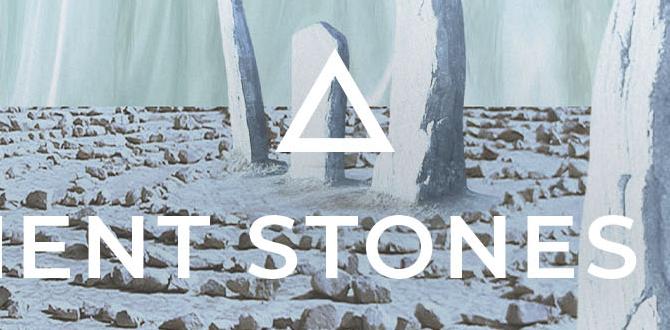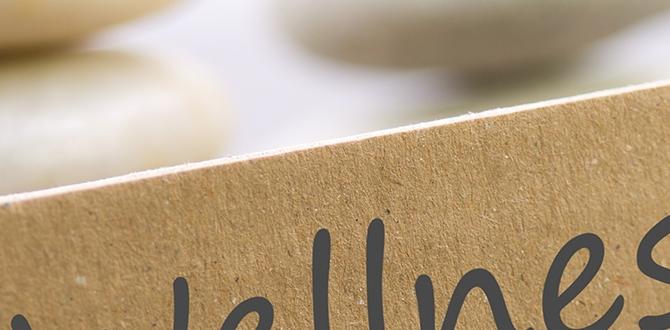The Atacama Desert shoulder season offers incredible value and fewer crowds. This guide reveals the genius trip plan to maximize your experience, balancing perfect weather with smart savings. Avoid peak season hassles and discover this otherworldly landscape at its best.
Planning an unforgettable trip to the Atacama Desert doesn’t have to be stressful or break the bank. Many travelers think only of the scorching summer or the chilly winter, missing the sweet spot in between. But what if we told you there’s a time when the skies are clear for stargazing, the days are comfortably warm for exploring, and the crowds are thin?
That’s exactly what the Atacama Desert shoulder season provides! It’s the smart traveler’s secret for an amazing adventure. We’ll walk you through everything you need to know for your genius Atacama trip plan, ensuring comfort and unforgettable memories. Ready to explore one of the driest places on Earth like a pro? Let’s dive in!
Why Shoulder Season Is Your Secret Weapon for the Atacama Desert
The Atacama Desert is a land of extremes, and while its peak seasons offer fantastic experiences, they also come with higher prices and more bustling tourist spots. The shoulder season, however, is where budget-friendly travel and an intimate encounter with this unique landscape perfectly align. Think ideal weather for comfortable exploration without the intense heat or biting cold, plus fewer people sharing those breathtaking vistas. It’s the sweet spot that savvy travelers seek for a truly memorable and hassle-free journey.
What Are the Atacama Desert Shoulder Seasons?
Generally, the Atacama Desert experiences its shoulder seasons in the spring and fall. These periods strike a wonderful balance, offering pleasant temperatures and fewer tourists compared to the peak summer and winter months. This timing allows for more flexibility in planning and often translates to better deals on flights and accommodations. Here’s a closer look:
- Spring (September to November): As the desert awakens from its cooler months, spring brings mild daytime temperatures and cool evenings. The wildflowers, like the rare “desierto florido” (flowering desert) in certain regions, can make a spectacular appearance, especially after good rainfall. It’s a beautiful time to witness the desert’s subtle rebirth.
- Autumn (March to May): Following the summer heat, autumn offers a welcome respite. The days are comfortably warm, perfect for trekking and exploring geysers, while the nights remain clear and ideal for the world-class stargazing the Atacama is famous for. The landscape holds its warmth without the intense summer sun.
Benefits of Traveling in the Shoulder Season
Opting for the shoulder season in the Atacama Desert unlocks a treasure trove of advantages. It’s about making your travel experience smoother, more affordable, and more authentic.
Fewer Crowds and More Peace
Imagine standing at the stunning Valle de la Luna (Moon Valley) without jostling for the best photo spot, or enjoying the therapeutic waters of the Puritama Hot Springs with ample space. Shoulder season means you can immerse yourself more deeply in the natural beauty and quiet majesty of the desert without the constant presence of large tourist groups. This allows for a more personal and reflective experience.
Pleasant Weather Conditions
The Atacama Desert can experience harsh temperatures. During the shoulder seasons, you’ll find a comfortable middle ground. Daytime temperatures are typically warm enough for exploring without feeling overwhelming, and nighttime temperatures, while cool, are manageable with appropriate layers. This makes activities like hiking, visiting altiplanic lagoons, and exploring geological formations much more enjoyable.
Cost Savings on Travel and Lodging
This is often the most compelling reason for choosing shoulder season. Airlines and hotels tend to offer more competitive prices outside of peak demand periods. You can stretch your travel budget further, potentially allowing for longer stays, more excursions, or upgrading to nicer accommodations. These savings can make a dream trip more accessible.
Better Availability of Tours and Guides
With lower demand, you’ll likely find it easier to book your preferred tours and secure guides, especially for specialized activities like astrophotography workshops or multi-day treks. This means less stress in organizing your itinerary and more reliable access to the experiences you’re looking forward to.
Your Genius Atacama Desert Shoulder Season Trip Plan
Crafting a smart itinerary for the Atacama Desert during its shoulder season involves understanding the region’s unique climate and attractions. We’ll break down the essentials to ensure your adventure is seamless and spectacular.
Step 1: Choose Your Dates Wisely
As we’ve discussed, the shoulder seasons are generally September to November and March to May. Consider your priorities. If you dream of potentially seeing wildflowers, lean towards the earlier part of the spring season (September/October). If comfortably warm days and clearer skies for stargazing are paramount, autumn (March-May) is often excellent.
Pro Tip: Always check the specific weather forecasts closer to your travel dates, as microclimates can exist. For instance, temperatures in San Pedro de Atacama, the main tourist hub, can vary significantly from higher altitudes.
Step 2: Book Your Flights and Accommodation
With your dates set, it’s time to secure your travel essentials. Flying into El Loa Airport (CJC) in Calama is the most common route, followed by a bus or private transfer to San Pedro de Atacama. Because it’s shoulder season, you’ll have a better chance of snagging good flight deals. Websites like Kayak or Google Flights can help you compare prices.
For accommodation, consider booking 2-3 months in advance to secure your preferred option, especially if you have specific needs like family rooms or accessibility features. Options range from hostels to luxury hotels.
Accommodation Considerations for All Travelers
Whether you’re traveling solo, as a couple, or with family, comfort is key. For families traveling with young children or for adults who prioritize extra comfort and discretion during long journeys or during their stay, considering options that offer privacy and ease of mind is crucial.
If using personal care items like adult or child diapers, looking for hotels with discreet laundry services or private changing areas can add significant peace of mind. It’s always wise to check hotel amenities and policies regarding personal care needs beforehand. Many places are accommodating, and a quick email can clarify any concerns.
Step 3: Create Your Itinerary of Must-See Sights
The Atacama Desert is vast, and you’ll want to prioritize. San Pedro de Atacama serves as the gateway to most attractions. Here are some essential highlights and how they fit into a shoulder season plan:
- Valle de la Luna & Valle de la Muerte (Moon Valley & Death Valley): Famous for its surreal landscapes, perfect for sunset. Shoulder season offers pleasant sunset viewing temperatures.
- El Tatio Geysers: The highest geyser field in the world. You’ll need to leave very early (before dawn) for the best spectacle. While shoulder season is less cold than winter, it’s still chilly at this altitude, so warm layers are essential (see packing list). The steam is more visible in cooler temperatures, so autumn can be particularly good for this!
- Lagunas Altiplánicas (Miscanti & Miñiques): Stunning high-altitude lagoons reflecting the surrounding volcanoes. The drive itself offers incredible scenery.
- Salar de Atacama (Atacama Salt Flat) & Laguna Chaxa: Home to flamingos and a vast expanse of salt.
- Stargazing Tours: The Atacama boasts some of the clearest night skies on Earth. Shoulder season nights are typically clear and stable for optimal viewing.
- San Pedro de Atacama Town: Explore the charming adobe streets, local markets, and craft shops.
A common itinerary spans 3-5 days, allowing you to cover the main attractions without rushing. For example:
| Day | Morning Activity | Afternoon Activity | Evening Activity |
|---|---|---|---|
| 1 | Arrive in Calama, Transfer to San Pedro, Settle In | Explore San Pedro Town, Visit Local Market | Valle de la Luna & Mars Valley Sunset Tour |
| 2 | El Tatio Geysers (Early Morning) | Machuca Village / Puritama Hot Springs | Stargazing Tour |
| 3 | Lagunas Altiplánicas & Salar de Atacama (Salar del Chaxa) | Relax or Explore More of San Pedro | Dinner in Town |
| 4 | Optional: Rainbow Valley or other excursions | Transfer back to Calama, Depart | N/A |
Step 4: Pack Smart for All Conditions
The Atacama Desert is known for its dramatic temperature shifts between day and night, and altitude plays a big role. Layering is key!
Essential Packing List for Atacama Shoulder Season:
- Base Layers: Wicking t-shirts and long-sleeved shirts.
- Mid Layers: Fleece jacket or warm sweater for cooler mornings and evenings.
- Outer Layer: A windproof and water-resistant jacket is crucial, especially for higher altitudes and windy conditions.
- Pants: Comfortable hiking trousers or jeans. Consider zip-off pants for versatility.
- Footwear: Sturdy, closed-toe walking shoes or hiking boots.
- Headwear: A wide-brimmed hat for sun protection during the day and a warm beanie for chilly nights/early mornings.
- Sun Protection: High SPF sunscreen, sunglasses, and lip balm with SPF. The sun is intense here, even when it doesn’t feel hot.
- Hydration: A reusable water bottle. Staying hydrated is vital in the dry desert air.
- Personal Care: Consider bringing any personal comfort items you might need. For those requiring them, discreet and high-absorbency adult or child diapers can provide security and peace of mind, especially during long excursions or transfers. Packing a small resealable bag for discreet disposal can also be helpful.
- Camera and Binoculars: To capture the stunning landscapes and wildlife.
- Small Backpack: For day trips to carry water, snacks, sunscreen, and an extra layer.
- Motion Sickness Medication: For winding roads or high-altitude travel if you are prone to motion sickness.
- Headlamp or Small Flashlight: Essential for early morning tours to geysers or walking around at night if there’s no moon.
Step 5: Stay Hydrated and Acclimatize
The Atacama Desert is incredibly dry. Dehydration can sneak up on you and exacerbate altitude sickness. Drink significantly more water than you think you need, even before you feel thirsty. Avoid excessive alcohol and caffeine, as they can contribute to dehydration.
San Pedro de Atacama sits at an altitude of about 2,400 meters (7,900 feet). Many popular excursions go much higher, some over 4,300 meters (14,000 feet). Take it easy on your first day. Avoid strenuous activity right after arriving. Listen to your body. If you experience headaches, dizziness, or nausea, rest and drink water. Altitude sickness (soroche) is real, but often manageable with these precautions.
For more information on altitude sickness, the Centers for Disease Control and Prevention (CDC) offers excellent guidance.
Step 6: Consider Guided Tours
While it’s possible to rent a car, many travelers find guided tours to be the most convenient and informative way to experience the Atacama. Local guides offer invaluable insights into the desert’s geology, flora, fauna, and indigenous history. They also handle transportation to remote locations and ensure you visit sites at the optimal times. For stargazing, the expertise of an astronomer leading the tour is essential for understanding the celestial wonders.
Research reputable tour operators in San Pedro de Atacama. Check online reviews and inquire about group sizes. Smaller groups can offer a more personal experience, which is a significant advantage of traveling during the shoulder season.
Step 7: Food and Drink
San Pedro de Atacama has a good selection of restaurants and cafes catering to various tastes and budgets. You’ll find local Chilean cuisine, international dishes, and vegetarian options. Try local specialties like llama meat or empanadas. Remember to stay hydrated with plenty of water. Many tours will include some snacks or water, but it’s always good to have your own supply.
Optional Activities to Enhance Your Trip
If you have extra time or want to delve deeper, consider these:
- Valle del Arcoiris (Rainbow Valley): Known for its multi-colored hills.
- Termas de Puritama (Puritama Hot Springs): A series of natural thermal pools in a canyon – wonderfully relaxing.
- Salar de Tara: A remote and stunning salt flat with unique rock formations, often a full-day excursion.
- Caracara Birdwatching: For nature enthusiasts.
Atacama Desert Shoulder Season: Pros and Cons
While the shoulder season is highly recommended, it’s always good to be aware of the trade-offs. Here’s a quick breakdown:
| Pros | Cons |
|---|---|
| Fewer crowds, more serene experience. | Slightly cooler temperatures than peak summer (but still pleasant). |
| Cost-effective for flights and accommodation. | Potential for occasional cooler weather, especially at higher altitudes. |
| Generally pleasant daytime temperatures for exploration. | Wildflower bloom (“desierto florido”) is not guaranteed and depends on rainfall. |
| Excellent conditions for stargazing. | Some specific high-altitude attractions might have limited accessibility after rare heavy rains. |
| More availability for tours and guides. | N/A |
FAQs
When is the best time to visit the Atacama Desert?
The Atacama Desert shoulder seasons, from September to November (spring) and March to May (autumn), offer the best balance of pleasant weather, fewer crowds, and reasonable prices. These periods avoid the extreme heat of summer and the coldest temperatures of winter.
What is the weather like in the Atacama Desert during shoulder season?
During spring (Sept-Nov) and autumn (Mar-May), daytime temperatures are generally mild to warm, around 20-25°C (68-77°F), making it comfortable for exploring. Nights can be cool, dropping to 5-10°C (41-50°F), especially at higher elevations. Always pack layers!






